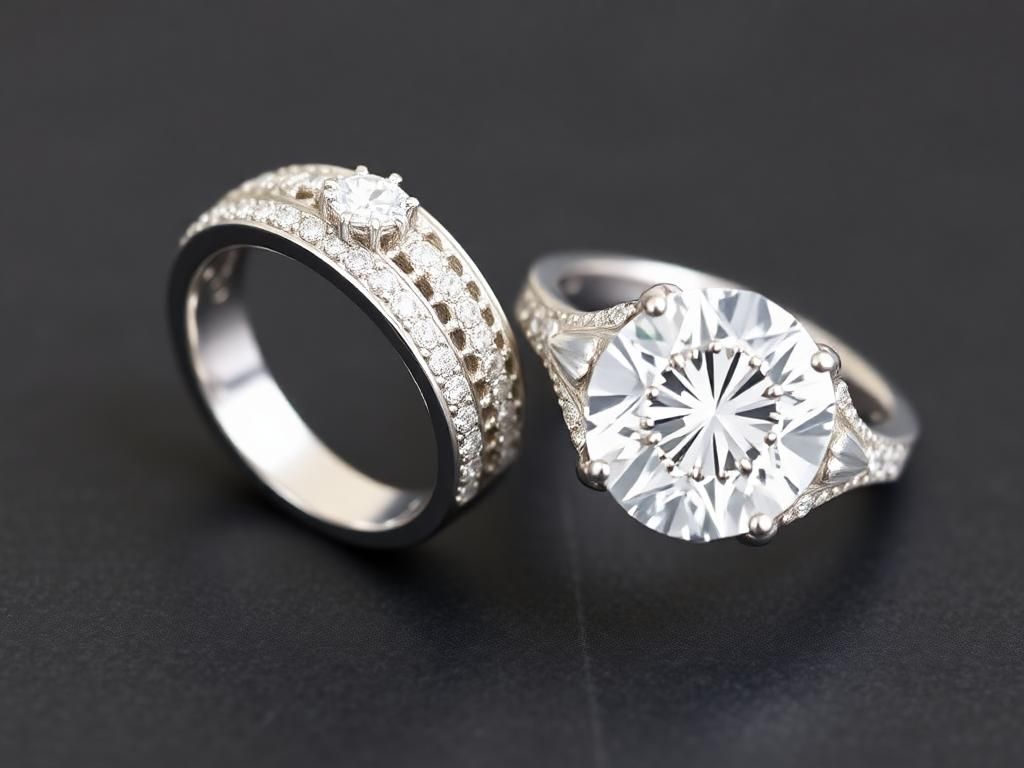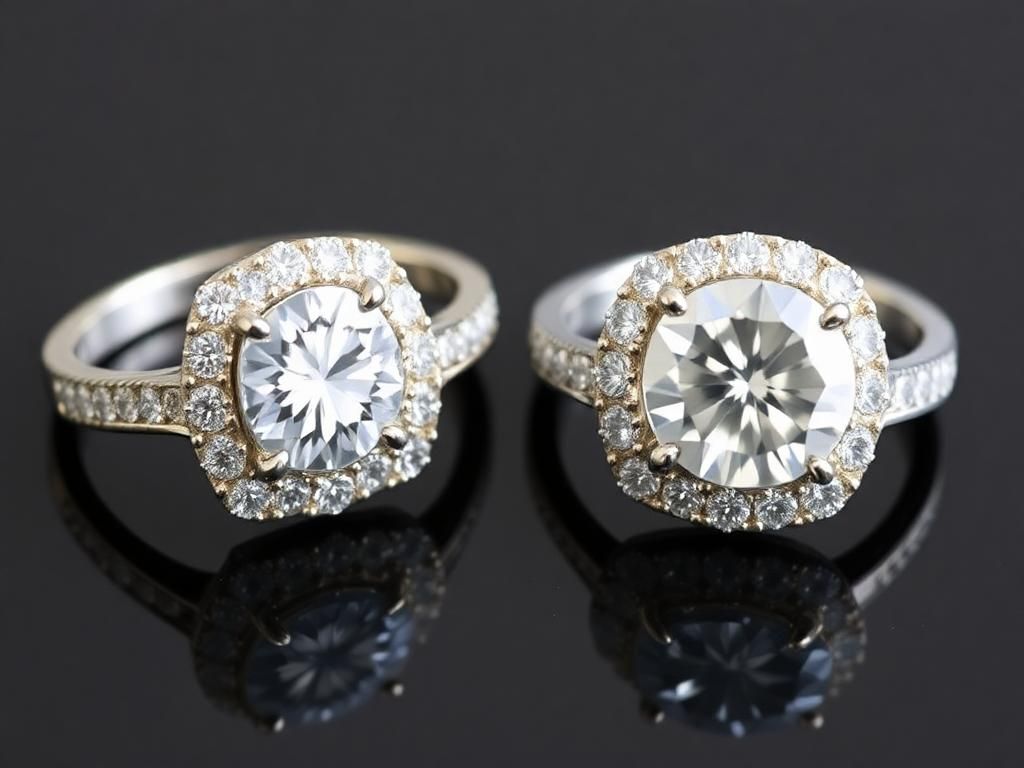Choosing between white gold vs silver can be an exhilarating journey for jewelry enthusiasts and casual buyers alike. As two popular options for rings, necklaces, and other accessories, understanding their differences is crucial for informed decisions. This article will delve into various aspects of white gold and silver, including their composition, appearance, durability, maintenance, cost, and more. By the end, you’ll have a clearer picture of which metal suits your style and needs.
Composition and Production
What is White Gold?
White gold is an alloy made primarily of gold and other metals, such as palladium, nickel, or silver, which give it a gleaming white finish. Its creation involves mixing yellow gold with these metals to produce varying karat weights, such as 14k or 18k white gold. The process often includes a rhodium plating finish to enhance its shine and durability, making it a popular choice for wedding bands and fine jewelry.
What is Silver?
Silver, often celebrated for its natural beauty, comes in different purities. Sterling silver, which contains 92.5% silver and 7.5% of other metals like copper, contrasts with fine silver, which comprises 99.9% silver. The production of silver involves mining ores, refining the metal, and subsequently alloying it to achieve suitable qualities for jewelry-making.
Appearance and Aesthetic Properties
Color and Luster
In the white gold vs silver discussion, the color characteristics play a significant role. White gold has a lustrous, metallic shine due to its rhodium plating, while silver boasts a brighter, shinier finish that can tarnish over time. The rhodium finish on white gold offers superior durability, while natural silver’s timeless appeal often draws those who appreciate its authenticity.
Popular Styles and Trends
Both metals have their unique place in current jewelry trends. White gold pieces are trending in elegant and modern designs suitable for formal occasions, while silver dazzles in bohemian and rustic styles. Each metal carries cultural significance; for instance, silver has a long history associated with wealth and purity, while white gold has emerged as a favored alternative to yellow gold in contemporary weddings.
Durability and Maintenance

Strength and Hardness
When exploring white gold vs silver, one must consider their strength. White gold is typically stronger due to its alloy composition, with added metals enhancing its hardness. In contrast, silver is softer and more prone to scratches and dents, especially in its pure form. Thus, it might require careful handling, particularly in everyday wear situations.
Maintenance Requirements
White gold requires specific care, including occasional rhodium replating to maintain its shine. Gentle cleaning with dedicated jewelry cleaners or warm soapy water is recommended. Silver, on the other hand, can tarnish over time. To maintain its appearance, regularly polishing with a silver cloth and storing it in anti-tarnish pouches can help prevent discoloration.
Cost Comparison
Price Factors
In the white gold vs silver price battle, white gold usually comes with a higher price tag than silver. The market fluctuates with the price of gold being significantly higher than that of silver. The purities, such as 14k and 18k white gold, lead to different price points. Additional costs may arise from rhodium plating or intricate designs.
Value Retention
Investing in jewelry goes beyond initial costs. White gold generally has a better long-term value retention compared to silver, due to its precious metal content and broader desirability. Resale value varies depending on condition, market demand, and the craftsmanship of individual pieces.
Allergies and Sensitivities
Allergic Reactions
One critical factor in the white gold vs silver conversation is allergies. White gold commonly contains nickel, which can lead to allergic reactions in some individuals. However, various hypoallergenic options are available, such as white gold made with palladium. Silver, particularly sterling silver, is often viewed as hypoallergenic, making it suitable for most wearers.

Choosing the Right Metal for Sensitive Skin
Individuals with metal sensitivities should consider their options carefully. For those prone to allergies, seeking nickel-free white gold or opting for fine silver can provide relief. Always check metal composition before making a purchase, especially for earrings or rings that may cause skin irritation.
Personal Preference and Style Considerations
Choosing Based on Lifestyle
Your lifestyle can influence your choice between white gold vs silver. For active individuals regularly engaging in sports or manual work, white gold is a more durable option likely to withstand daily wear. On the other hand, silver offers a chic appeal for casual wear but may not endure rough handling.
Customization Options
Customization opportunities abound in both metals. White gold’s alloying possibilities allow for various styles and colors, making it a fantastic choice for personalized jewelry. Silver is often favored for engravings and artisan designs, appealing to those who want to express individuality through their jewelry.
Conclusion
In the white gold vs silver debate, each metal has its unique attributes, costs, and aesthetic potential. While white gold has the advantage in durability and long-term investment, silver offers affordability and beauty. Your selection should align with your individual needs, style preferences, and sensitivities.
FAQs
Common Questions about White Gold and Silver
- Is white gold better than silver?
- Can I wear white gold and silver together?
- How do I clean and care for my jewelry?
- Which metal is more environmentally friendly?
- Is sterling silver worth it?
- What is the best metal for rings?
- How can I tell if my jewelry is real silver?
- Why does silver tarnish?
- Can white gold be resized?
- What are the most popular jewelry designs in silver?
Further Resources
For reputable sources of jewelry care, you can visit Jewelers of America and for more detailed insights on metals, check out The Gemological Institute of America.
| Aspect | White Gold | Silver |
|---|---|---|
| Composition | Gold mixed with palladium/nickel | Sterling (92.5%) / Fine (99.9%) |
| Durability | High (strong alloys) | Moderate (soft, can tarnish) |
| Maintenance | Rhodium replating needed | Regular polishing to avoid tarnish |
| Cost | High (market value of gold) | Lower (more affordable) |
| Allergen Considerations | Possible nickel allergies | Generally hypoallergenic |